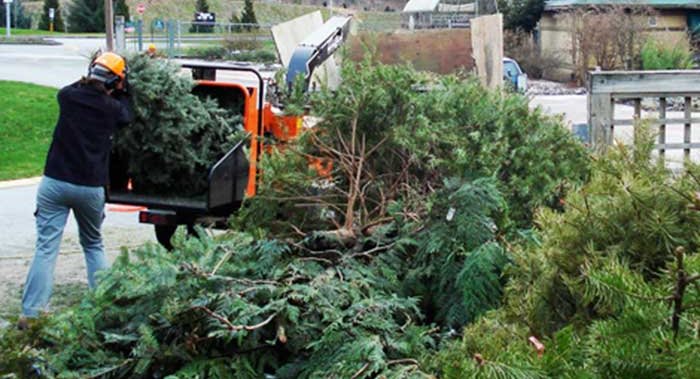The festive glow of Christmas eventually fades, leaving behind the task of bidding farewell to the holiday centerpiece – the Christmas tree. While some eagerly dismantle their tree the day after Christmas, others prefer to prolong the festive spirit, keeping it up well into the New Year. Regardless of personal preference, the inevitable question arises: what to do with the tree once its decorations are removed? Kelsey Leonard, an assistant professor at the University of Waterloo and founder of the Christmas Tree Lab, offers valuable insights into responsible tree disposal. Her organization dedicates itself to supporting Ontario’s Christmas tree industry through research, seeking to maximize the environmental benefits of these seasonal symbols.
The seemingly simplest solution, placing the tree curbside for municipal collection and subsequent mulching, presents potential pitfalls. Leonard stresses the crucial importance of meticulously removing all decorations – tinsel, lights, and forgotten ornaments. These remnants often contaminate the mulching process, rendering the trees unsuitable and ultimately diverting them to landfills. This defeats the purpose of responsible disposal and negates the tree’s potential to contribute positively to the environment. Therefore, conscientious removal of all decorations is paramount to ensuring the tree’s proper recycling. Individuals must take responsibility for their festive flora, returning it to nature in a way that replenishes, rather than burdens, the environment.
Beyond curbside collection, a range of environmentally sound alternatives exists. Leonard highlights the importance of mindful tree disposal and encourages exploration of these options. The Christmas Tree Lab has uncovered innovative practices employed by conservation authorities and botanical gardens, showcasing the potential for repurposing discarded trees. These organizations often incorporate trees into environmental restoration projects, transforming holiday remnants into valuable resources. This approach not only prevents landfill waste but also actively contributes to ecological restoration.
A prime example of such innovative repurposing is the use of Christmas trees in stream and shoreline restoration. Trees are strategically placed and tied together to capture sediment, thereby restoring cold-water habitats crucial for various fish and aquatic species. Furthermore, this method effectively repairs degraded streambeds and embankments, bolstering the integrity of natural watercourses. These resourceful initiatives demonstrate the potential for turning holiday waste into environmental assets. Many conservation authorities across Ontario actively seek discarded trees for these programs, providing individuals with an impactful way to dispose of their trees while supporting ecological restoration efforts.
Composting offers another eco-friendly alternative for those with the space and inclination. Chopping the tree into smaller pieces and adding them to a compost pile allows the tree to decompose naturally, enriching the soil with valuable nutrients. This method transforms the tree into a valuable resource for gardens and landscapes, completing the cycle of growth and decay. By choosing to compost, individuals contribute to a sustainable practice that minimizes waste and enriches the environment.
The post-holiday fate of the Christmas tree presents an opportunity to make environmentally conscious choices. Rather than simply discarding it as refuse, individuals can choose disposal methods that align with principles of sustainability and environmental responsibility. By carefully removing decorations, exploring local recycling programs, considering donation to conservation authorities or botanical gardens, or undertaking home composting, we can ensure that the festive spirit of the Christmas tree extends beyond the holiday season, contributing positively to the environment and supporting ecological restoration efforts. The Christmas Tree Lab’s research and advocacy underscore the importance of informed choices in tree disposal, transforming a post-holiday chore into an act of environmental stewardship. Choosing a responsible path allows the spirit of the season to live on, nourishing the environment rather than burdening it with waste.










